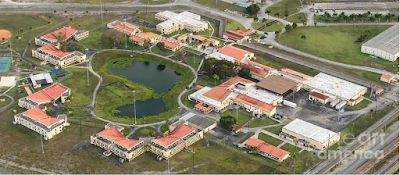 |
| When I was here, Frisbees were flying in April, not invective (WSJ) |
When college "protestors" call for the extermination of the Jews, I finally saw how the Holocaust could happen. Throughout my high school and college years the Holocaust appeared to be an anomalous event in human history, when a uniquely evil and magnetic demagogue could persuade millions of Germans that all their problems were due to the existence of a specific race of people. That could never happen to us Americans--we could never blame an entire race for our problems, and we had a strong sense of individual morality that would stop us long before such madness took hold.
When I hear the chant, "from the river to the sea" or "death to the Jews," I think of my college roommate--would they kill him, too? He was the first Jewish person I was ever close to, and I admired him. He came from a working-class Midwest background, a graduate of a public school, and was the son of terrific parents who welcomed this nerdy kid from Hawaii to their home over Thanksgiving.
Nearing the end of our college years, when some roommates and I went out partying, he was studying Organic Chemistry--one of the toughest courses in the entire undergraduate curriculum--in order to get into medical school. He passed the MCATs, attended Case Western Reserve Medical School, interned at UCLA, and returned to his hometown where he practices internal medicine to this day.
He was no privileged member of the patriarchy and worked for everything he got. He was certainly no "oppressor" when I knew him, and his lifelong profession belies the notion that he was ever an oppressor lording it over other people in the hierarchy.
Nor would he, as would I, ever call ourselves oppressed. We were just lucky to have gone to a good college, and I, for one, weep for what it has become.





























